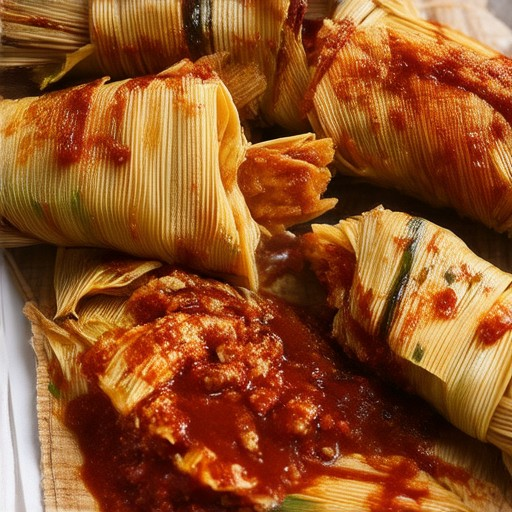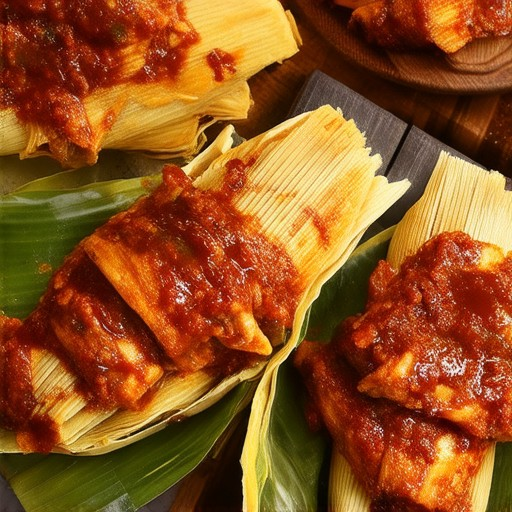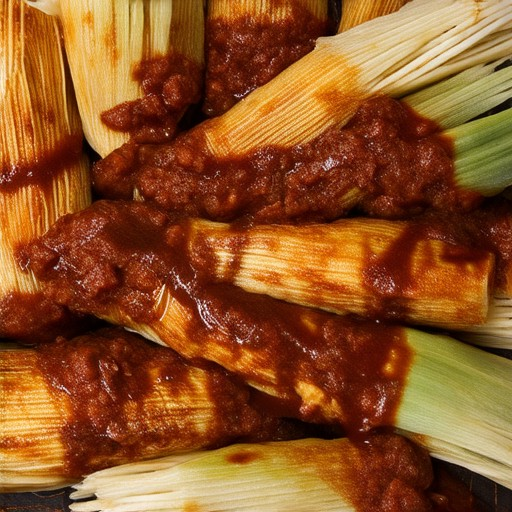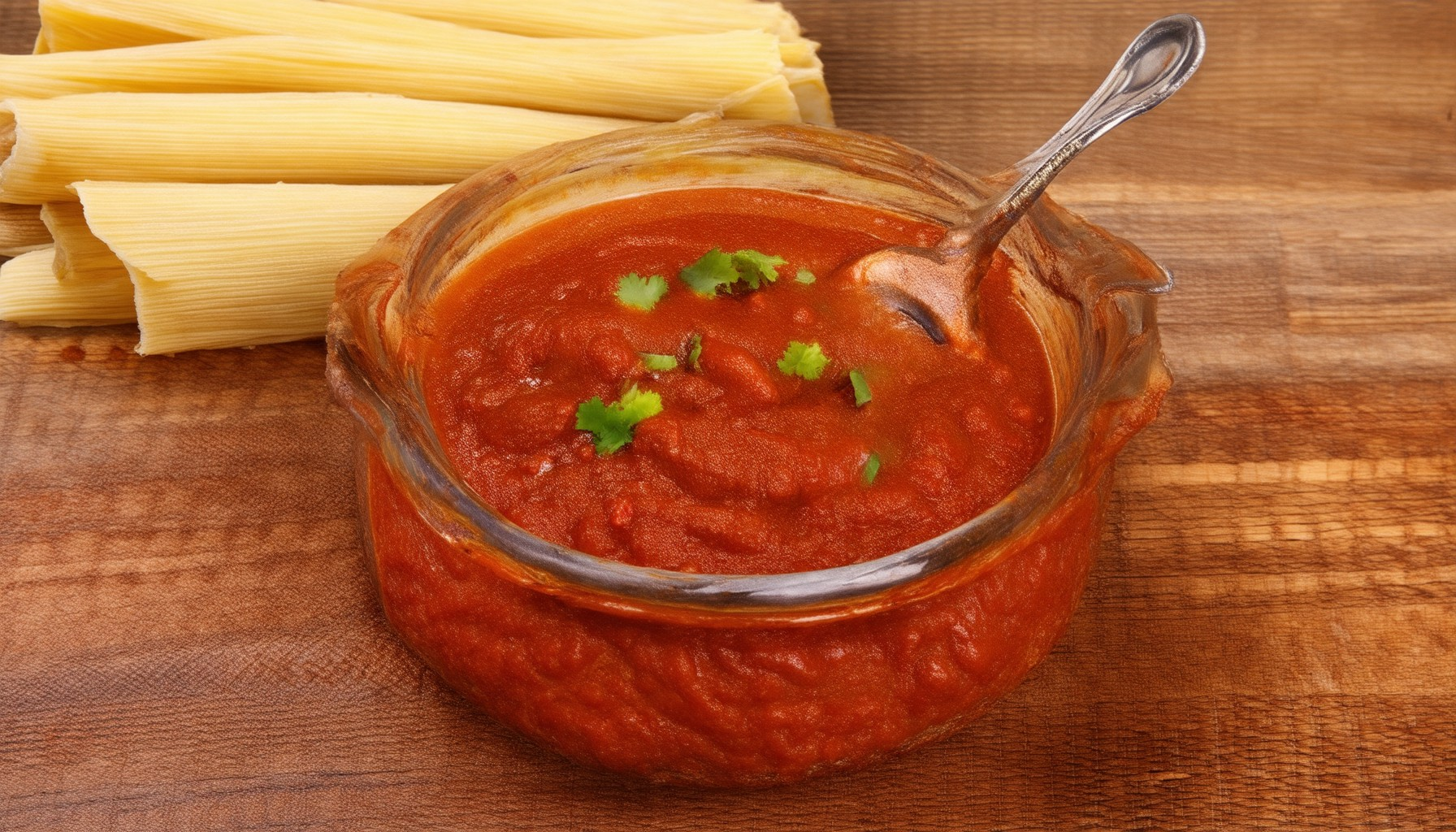Curious about what makes mole sauce the perfect companion for tamales? Whether you’re a seasoned chef or new to Mexican cuisine, mole sauce adds a rich, complex flavor that transforms ordinary tamales into a memorable dish. Known for its velvety texture and deep umami notes, mole sauce is a traditional ingredient that pairs seamlessly with tamales, offering a balance of sweet, spicy, and savory elements. While there are countless varieties of mole sauce, from simple recipes to elaborate ones, finding the right one can elevate your tamale experience to new heights. In this article, we’ll dive into the ingredients that make mole sauce unique, explore the different types of mole sauce available, and share tips on how to choose the best mole sauce for your tamales. Whether you’re looking to understand the basics or refine your cooking skills, this guide will help you master the art of pairing mole sauce with tamales.
Key Takeaways
– Mole sauce differs from enchilada sauce in thickness, with mole being richer and thicker, while enchilada sauce is thinner and spicier, often used as a base for fillings.
– Mole sauce and adobo sauce have distinct ingredient profiles, with mole incorporating fruits, nuts, and seeds for complexity, while adobo typically includes chocolate for a savory taste.
– Not all mole sauces contain chocolate, though it’s a common ingredient in traditional recipes, contributing to its rich, earthy flavor.

What is Mole Sauce Made Of?
Mole sauce is a rich, complex, and flavorful condiment commonly used in Mexican cuisine. Its ingredients vary slightly depending on the region and the preferences of the cook, but the base typically includes:
Ingredients:
- Chocolate : Often derived from unsweetened cocoa powder, such as Abuelita, it gives the sauce its distinctive depth and bitterness.
- Tomatoes : Fresh or canned tomatoes form the base, providing acidity and moisture.
- Chiles : Dried or fresh chilies are a staple, adding heat and smokiness.
- Nuts : Almonds, walnuts, and/or sesame seeds are toasted and ground into the mixture for texture and added flavor.
- Spices : A blend of cumin, coriander, oregano, thyme, epazote, and sometimes clove, each contributing unique aromatic notes.
Preparation Steps:
- Sauté onions and garlic until soft.
- Toast chilies, nuts, and seeds to enhance their flavors.
- Combine all ingredients in a pot and simmer for about an hour to allow the flavors to meld.
- Adjust seasoning with salt, pepper, and additional chili peppers for heat, if desired.
The versatility of mole sauce allows it to be adapted to various dishes, making it a popular ingredient in Mexican cuisine.
What Sauce Do You Eat Tamales With?
Tamales are traditionally served with a variety of sauces, each offering a unique flavor profile that complements the corn-based dough. The most iconic pairing is mole , a rich, complex sauce that originated in Oaxaca, Mexico. Mole comes in different varieties, such as mole negro (black mole) and mole rojo (red mole), both featuring ingredients like chocolate, chili peppers, and nuts for a deep, savory taste.
In addition to mole, tamales can be enjoyed with:
- Salsa Verde : A tangy, herby green sauce made from tomatillos, cilantro, and lime.
- Guacamole : A creamy avocado-based dip, perfect for those who prefer a lighter option.
- Tomato-Based Salsas : Simple salsas made from tomatoes, onions, and jalapeños, offering a fresh and spicy kick.
- Lime and Onion : A refreshing combination of lime juice and finely chopped onions for a zesty accompaniment.
Regional variations often dictate the sauce choice, with local specialties emerging in different parts of Mexico. For instance, in some areas, a unique twist on the sauce may pair exceptionally well with tamales, adding local flavor to this beloved dish. Whether opting for a rich mole or a zesty salsa, the sauce enhances the tamale experience, making it a versatile and adaptable dish.

What is a common mistake when making tamales?
One common mistake when making tamales is forgetting to properly prepare the corn husks. Many people overlook soaking the husks beforehand, which makes them tough and difficult to wrap around the tamales. Always soak fresh corn husks in water for at least 30 minutes before use to ensure they’re pliable and easy to work with.
Another frequent error is not steaming the tamales long enough after wrapping them. Steaming is essential to cook the masa and melt the fat within, ensuring the tamales are moist and flavorful. Under-steaming can result in dry, crumbly tamales that fall apart easily.
Additionally, overworking the masa dough can lead to a gummy texture. Mix the dough just until the ingredients are incorporated to maintain a light and tender consistency. Overmixing can make the dough dense and difficult to shape properly.
Lastly, many individuals forget to let the tamales cool slightly before serving. Tamales should be wrapped tightly in banana leaves or parchment paper and allowed to rest for about 10-15 minutes after steaming to set properly. Cutting them too quickly can make them messy and harder to eat.
For more expert tips and authentic recipes, visit our website at Panito Mole and explore our collection of traditional Mexican dishes.

Is Mole Sauce the Same as Enchilada Sauce?
Mole sauce and enchilada sauce are both iconic in Mexican cuisine, yet they serve distinct roles and have unique characteristics.
Mole Sauce:
- A rich, complex mixture traditionally made with ingredients like chocolate, nuts, seeds, and various spices.
- Known for its thick consistency and deep, earthy flavor with a slight sweetness.
- Used in dishes like mole enchiladas and often served on special occasions.
- Types include mole negro (with chocolate) and mole rojo (tomato-based).
Enchilada Sauce:
- Thinner and spicier, commonly found in canned or jarred forms.
- Made with chiles, tomatoes, onions, garlic, and herbs.
- Serves as a base for enchiladas, often used as a topping or coating for tortillas.
- Focuses on adding heat and flavor to the dish.
While both sauces feature chili as a key ingredient, mole sauce is more elaborate, often integrated into dishes as a marinade or finishing sauce. Enchilada sauce, however, is primarily a base for the filling process of enchiladas.
In essence, mole and enchilada sauces are both essential in Mexican cuisine but cater to different purposes, offering distinct textures and tastes.
Is Adobo Sauce the Same as Mole Sauce?
Adobo sauce and mole sauce are distinct in their ingredients, preparation methods, and uses in Mexican cuisine.
Adobo Sauce
Adobo sauce is a thick, rich mixture typically made with a blend of tomatoes, onions, garlic, cocoa powder (or chocolate), vinegar, oil, and spices. It is often used as a marinade or condiment for meats like pork (carnitas) and chicken. Its flavor profile is deep and savory, with a slightly sweet undertone due to the addition of chocolate.
Mole Sauce
Mole sauce, or mole, is a complex and elaborate sauce that typically consists of around 20 ingredients, including tomatoes, onions, garlic, fruits like pineapple and raisins, nuts, seeds, and a variety of spices. It is known for its sweet, spicy, and earthy flavor profile. Common types include mole negro (the most popular), mole colorado, and mole rojo. Mole is often used as a finishing sauce for dishes like tlayudas (Oaxacan-style pizzas) and chilaquiles.
Differences Between Adobo and Mole
- Ingredients: While both sauces share some common ingredients like tomatoes, garlic, and onions, mole incorporates a wider array of ingredients, including fruits, nuts, and seeds, which contribute to its complexity. Adobo may include chocolate, giving it a unique flavor.
- Flavor Profile: Mole is known for its sweet, spicy, and smoky notes, while adobo tends to be more savory and less sweet.
- Usage: Adobo is often used as a marinade or condiment, while mole is typically used as a finishing or layering sauce.
- Origin and History: Mole has ancient Aztec roots and has evolved over centuries, while adobo likely has Spanish influences due to its use of vinegar and other European ingredients.
- Preparation: Mole requires a longer cooking process to allow the flavors to meld, whereas adobo can be prepared more quickly, sometimes even using store-bought versions.
Common Uses
Both sauces are integral to Mexican cuisine, but they are used differently. Some dishes might combine both, using adobo as a base and adding mole as a finishing touch or vice versa. Exploring regional dishes can reveal creative uses of both sauces working together.
Understanding these differences allows you to choose the right sauce for your dish, enhancing both flavor and texture.

Does Mole Sauce Always Contain Chocolate?
Mole sauce, a beloved dish in Mexican cuisine, traditionally features a blend of ingredients that include tomatoes, onions, garlic, nuts, seeds, and various spices. While chocolate is commonly associated with mole, particularly in the Oaxacan style, it is not an absolute necessity. Some versions of mole do not include chocolate, opting instead for other ingredients to achieve depth and complexity. Thus, mole sauce does not always contain chocolate, as regional variations and personal preferences can lead to different formulations.





0 Comments